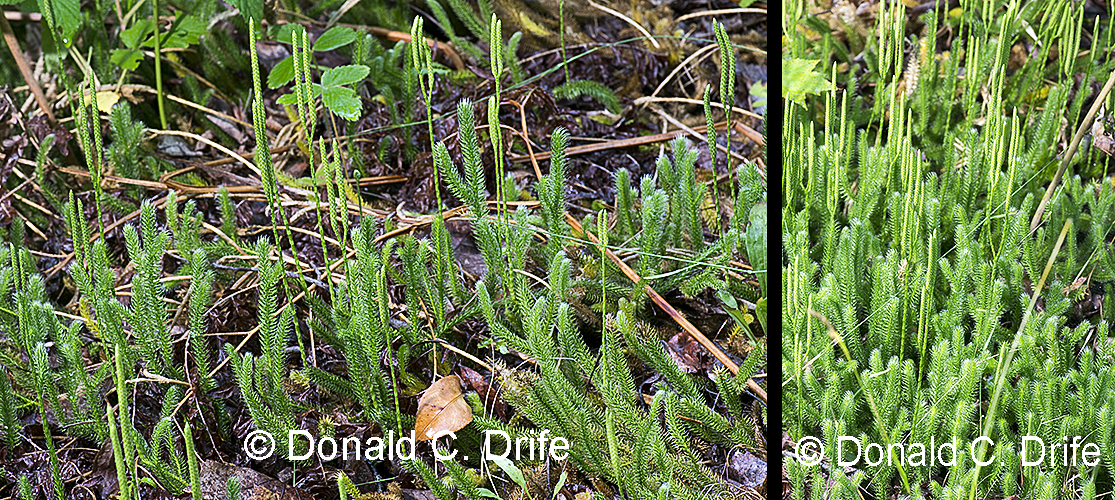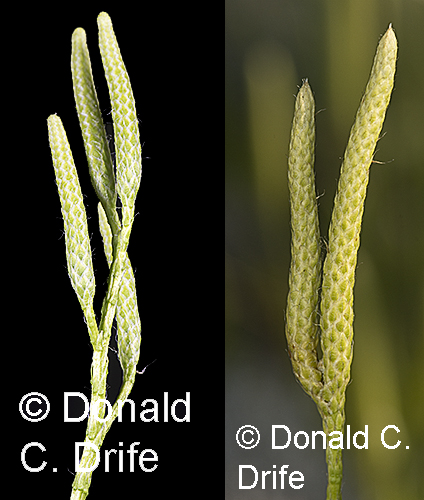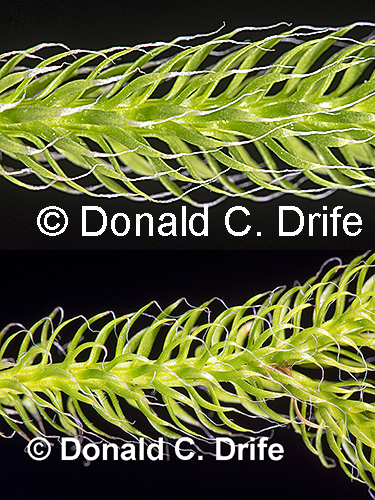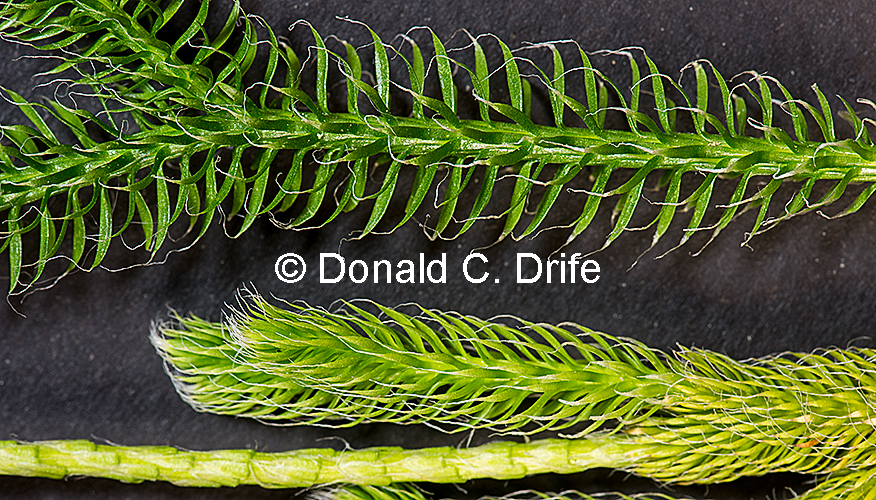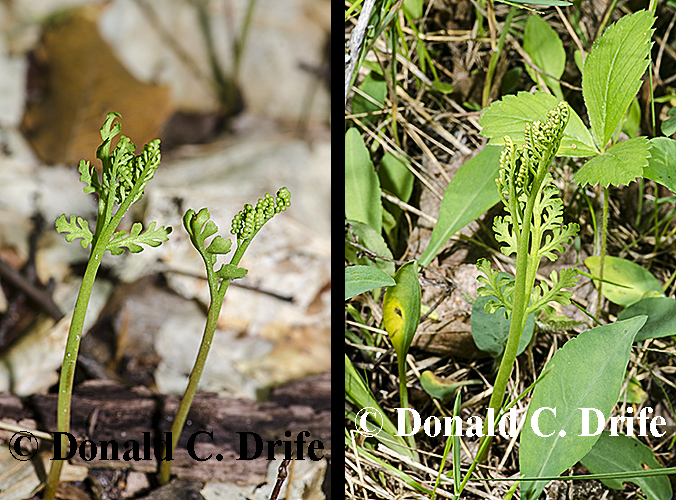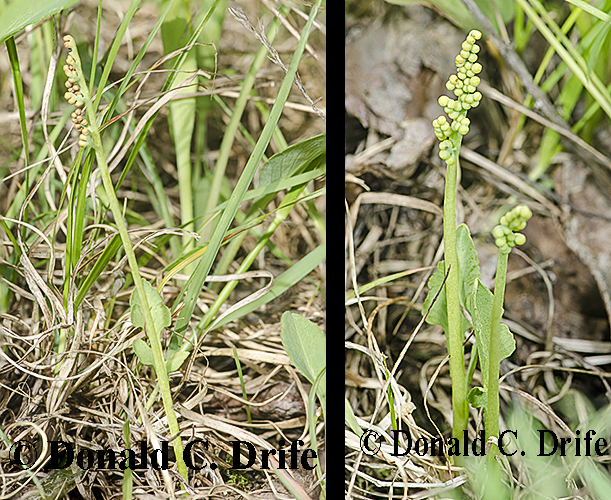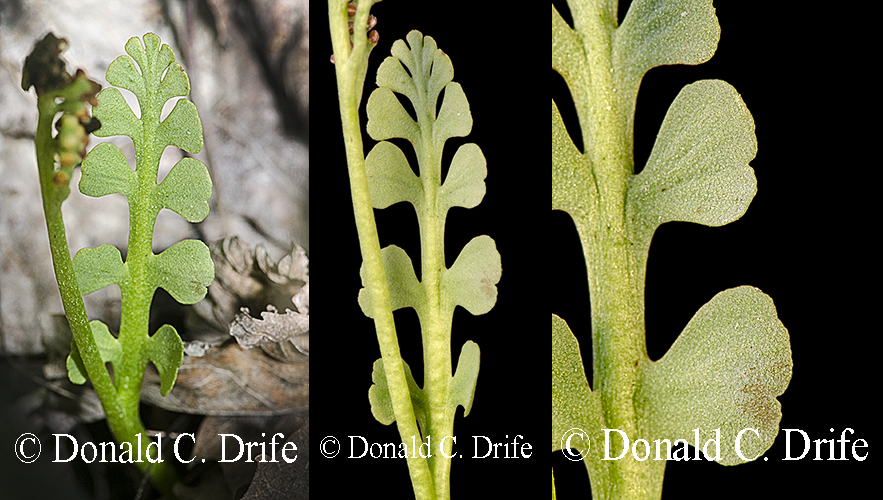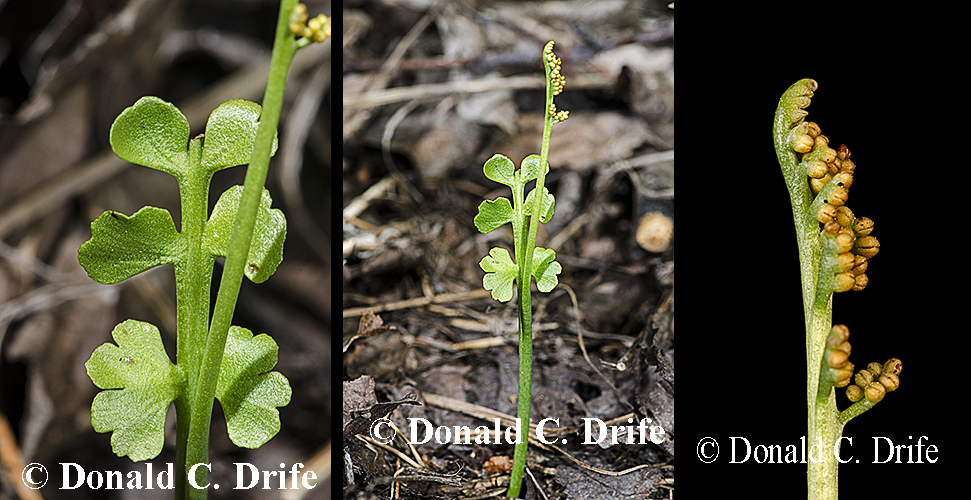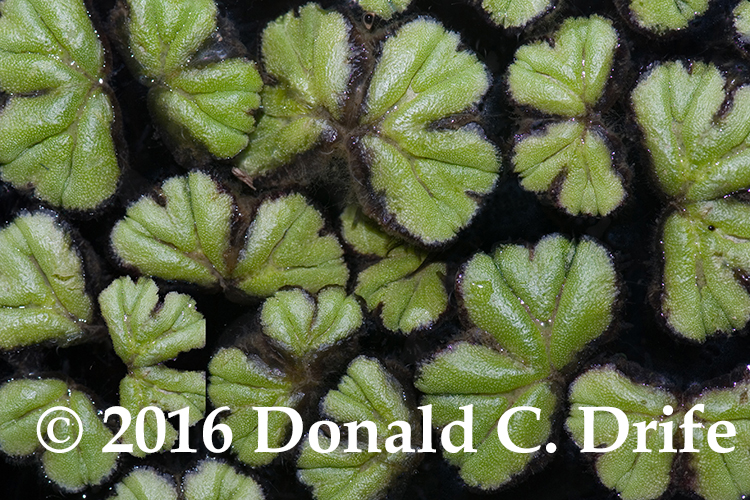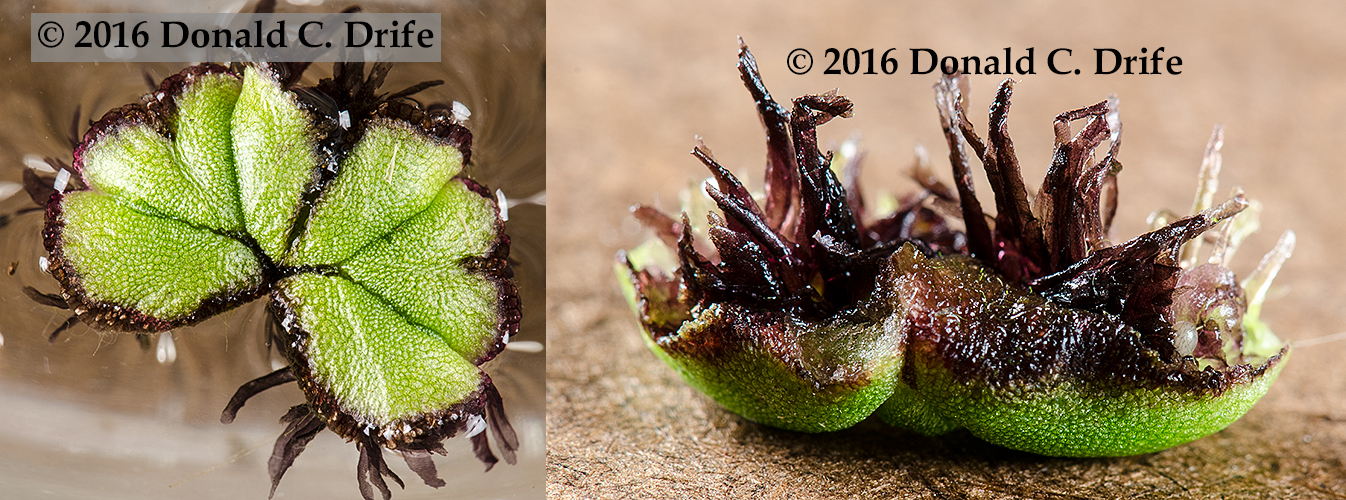Michigan has two species in the genus Lycopodium: L. clavatum and L. lagopus. They are both called Running Ground-pine. L. clavatum is also called: Common Clubmoss, Stag’s-horn Clubmoss, Wolf’s-foot Clubmoss, and simply Ground Pine. L. lagopus is called: One-cone Clubmoss, Ptarmigan Clubmoss, and Arctic Stag’s-horn Clubmoss. Additional common names are also in print. I tend to call them Clavatum or Lagopus and leave it at that.
The remaining Michigan Clubmoss species that once were in Lycopodium are now found in five other genera. If you desire more information on these Clubmosses then consult Dan Palmer’s new book Michigan Ferns and Lycophytes: A Guide to Species of the Great Lakes Region.
The two species of Running Ground-pine are easily distinguished when seen in the field, but sometimes herbarium specimens are difficult to determine. Clubmosses have sun forms and shade forms. Sun forms are normally more compact than shade forms. In the field you know if you have a sun or shade form but it often is not obvious with a pressed specimen.
Clavatum has multiple strobili (cones) that are semi-alternate on the pedicel. A rare pedicel will have one strobilus, so check a large part of a colony to determine the number. Its leaves are awn tipped meaning they taper to a hair-like tip. They are ascending, at least in the shade form. Leaves on shade form Clavatum are slightly longer and spread more than the appressed leaves on Lagopus. Lagopus has leaves 3 to 5mm long and Clavatum has leaves 4 to 6mm long. Sun forms of Clavatum have leaves that resemble shade form Lagopus. Clavatum is seen more in Michigan than Lagopus.
Lagopus normally has a single strobilus. A rare pedicel will have two strobili but they will be sessile (stalkless). This might result from damage to a developing strobilus. Its leaves are also awn tipped but tend to be more appressed than Clavatum. Lagopus branches are more upright than Clavatum.
It would be nice to have a few more characteristics to use to separate these two species. An amateur botanist should find and study a colony looking for other differences. Once we understand more about each species’ variations then we might find other consistent ways to tell them apart.
Copyright 2018 by Donald Drife
Webpage Michigan Nature Guy
Follow MichiganNatureGuy on Facebook

